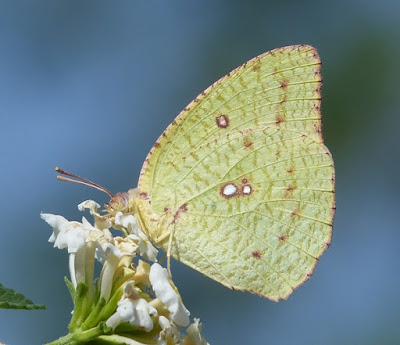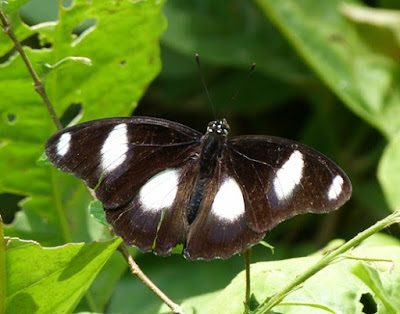to make clear why the riders and attendants are unable to peer over the hill - all except for the rider in the scarlet
who looks at the fracas below in consternation. The rider atop the skewbald horse points upwards, as if to say 'we need to get higher to see what's happening behind the hill'. Another uses his riding crop to spur his horse higher.
Yet, scholars and experts tell us that '...the artist places it in an old-fashioned Persian landscape. The terrain has been tilted up ... evoking the favourite Safavid landscape formula of the 16th century...' (Ebba Koch).
bushes, etc. - all are true-to-life.
Scholars, of course, do point out that the 'flora and fauna' is most naturalistic, noting the obvious 'watercourse' in the immediate foreground with sarus cranes (
), egrets and the 'delightful' grasses. Again, to me, the bottom of the painting appears to be the edge of an
(wetland / lake). The flora and avifauna depicted here are entirely consistent with that particular habitat.
Indeed, Milo Beach says of Balchand that there are 'few artists... as reliable in convincing us that (true or not) the scene once lay before his eyes'.
This is not inconceivable. Balchand's career spanned the courts of Akbar, Jahangir and Shah Jahan. When he painted this for the
Padshahnama 30 years after the event, his signature includes
'pir ghulam' (aged servant). At some point he may well have accompanied one or other of his masters to Bari (which is not far from Agra) and become personally familiar with the terrain.
If we allow the eye to travel to the very top of the painting, we notice the sky is tinged with gold and lilac streaks. The sun has already set as the drama unfolds (this is important as we shall see).
What of the frozen tableau itself, the rampaging lion and the main characters?
Why is the emperor Jahangir shown removed from the action? He stands to the side holding a
tufang (matchlock).
Why does the attendant (at left) appear to strike the lion with a wooden staff instead of drawing his sword? Did he not have time to react when the lion charged the party?
Is Prince Khurram able to deliver the
coup-de-grace aimed at the lion's neck?
Are we to understand that the other attendant (with dark shield) is merely a mute spectator, or could he somehow be important to the tale?
Fortunately, we don't have to rely purely on guesswork to answer these questions.
The
Padshahnama paintings are accompanied by written text.
Elsewhere, in the
Jahangirnama (the memoirs of Jahangir)
, the emperor wrote a detailed account of this incident. Perhaps other sources exist; there are certainly other Mughal paintings that illustrate this very scene. However, the
Padshahnama text and the
Jahangirnama are often contradictory, and both are certainly full of hyperbole. Remember that the former is a grand record of the early years of Shah Jahan's reign, the paintings and text being personally supervised by him. The latter, the '
Tuzuk', would hardly be expected to appear disparaging to the emperor (though Jahangir himself records with candour that when the lion charged he was thrown to the ground and a few of his servants even trampled over his chest in the confusion!)
So let us try and piece together what may have actually happened.
The emperor Jahangir, accompanied by a small hunting party comprising Khurram, nobles, courtiers and attendants, has been out coursing with cheetahs in December 1610 near Bari. The day's hunting is over. Just then word arrives of a large lion in the vicinity. Jahangir is excited, and despite being dissuaded by his party owing to the lateness of the hour and the dangers of hunting a lion on horseback, he decides to ride off to the challenge. It would be instructive to note here that the lion hunt is the apogee of Mughal royal sport.
When Jahangir first sees the lion he decides to dismount and fire the
tufang. The others have followed as best as they could, and are possibly in disarray. Jahangir fires another shot, still not steadying the matchlock with its tripod. It is a moot point whether the lion is at all wounded by Jahangir's
tufang. Indeed, in the painting the lion appears to be unmarked by musket shot. Jahangir asks Anup Singh Badgujar, his chief huntsman, to hand over the other
tufang and he fires
just as the lion presses home his charge. Jahangir misses again.
We can imagine the moment; in the fast-gathering gloom of a winter evening in Rajasthan, the prey becomes hunter. It is uncanny how a large predator always knows whom to single out for attack. In this case the target could possibly have been Jahangir - smoking matchlock in hand.
Anup, still holding the tripod, must have thrust himself between the lion and its target. He is the undoubted hero of the moment. We do not need to go into the details of his act of valour, which are recorded effusively in the texts. Suffice it to say that he is lucky to have got away with his life. He is mauled severely.
Undoubtedly, Ramdas and Khurram draw their swords and try to save the stricken man. Ramdas can be seen striking the lion with his sword in our painting. For a moment let us ignore the sword wound on the lion's back. Khurram is seen, sword upraised, poised to deliver a blow to the lion's neck.
Now here is the interesting bit.
Does Khurram deliver this blow?!
The Padshahnama states that Khurram held his hand because he did not want to accidentally strike Anup's right arm (which we can see on the lion's neck). Instead he strikes the lion's 'waist'. Could this have caused the sword wound on the lion's back? And then most inexplicably, 'in a sudden motion', Khurram 'sheathes his sword'. What an extraordinary thing for him to do when he has a rampaging lion only a few feet away from him. Anyhow, the aged yet doughty Raja Ramdas does land a further sword stroke or two before the lion releases Anup and roars away.
We are told that other hunters and attendants do manage to later kill the lion, but not before a 'torch-bearer' is killed by the lion in the gathering darkness.
It is only much later, after Jahangir has personally attended to Anup's wounds and thanked Raja Ramdas, that our 'silent attendant' the shield-bearer informs the emperor of Khurram's role in this incident. Then Jahangir 'with his own hands' draws Baba Khurram's sword from the scabbard and sees 'with his own eyes' the blood on the blade and 'praises him'. The Prince's star has risen. Khurram's peripheral role today would be almost mythologized, his 'personal bravery, physical fitness and martial prowess' would be extolled, and he would go on to one day become Emperor Shah Jahan.
Anup Singh Badgujar would later be rewarded by Jahangir and would be given the title 'singhdalan' (lion-crusher).
The demise of the luckless torch-bearer or '
mashaalchi' brings to mind a quote from the Sufi poet Bullhe Shah:
'Bullheya: mullah teh mashaalchi, dohaan ikko citt
logaan karde canana, ap hanere nitt'
(Bullhe says: the mullah and the torch-bearer both have the same intent.
They spread light to people, but are always in the dark themselves.)
Our torch bearer has been plunged into total darkness unfortunately, but I did not really mean to equate the mullah with the art scholars...
Finally, I wonder whether this lion encounter (which, from Jahangir's point of view, was rather unsatisfactory) could have goaded him to embark on a veritable frenzy of lion killing. Scholars tell us that Jahangir killed 12 lions in the 'three months beginning of 1611'!
My apologies if I have unwittingly repeated ideas and observations already published in regard to this famous painting.
Sahdev Singh
Jaipur, 3rd April 2015
sahdevsingh2004@yahoo.co.in
References:
1. The Padshahnama - King of the World - An Imperial Mughal Manuscript from the Royal Library, Windsor Castle - Milo Beach, Ebba Koch, et al.
2. Jahangirnama (Tuzuk-e-Jahangiri)
3. 'Shah Jahan' by Fergus Nicoll
4. Bullhe Shah - translated by Christopher Shackle - Murty Classical Library of India
5. B.N. Goswamy - The Spirit of Indian Painting





















































